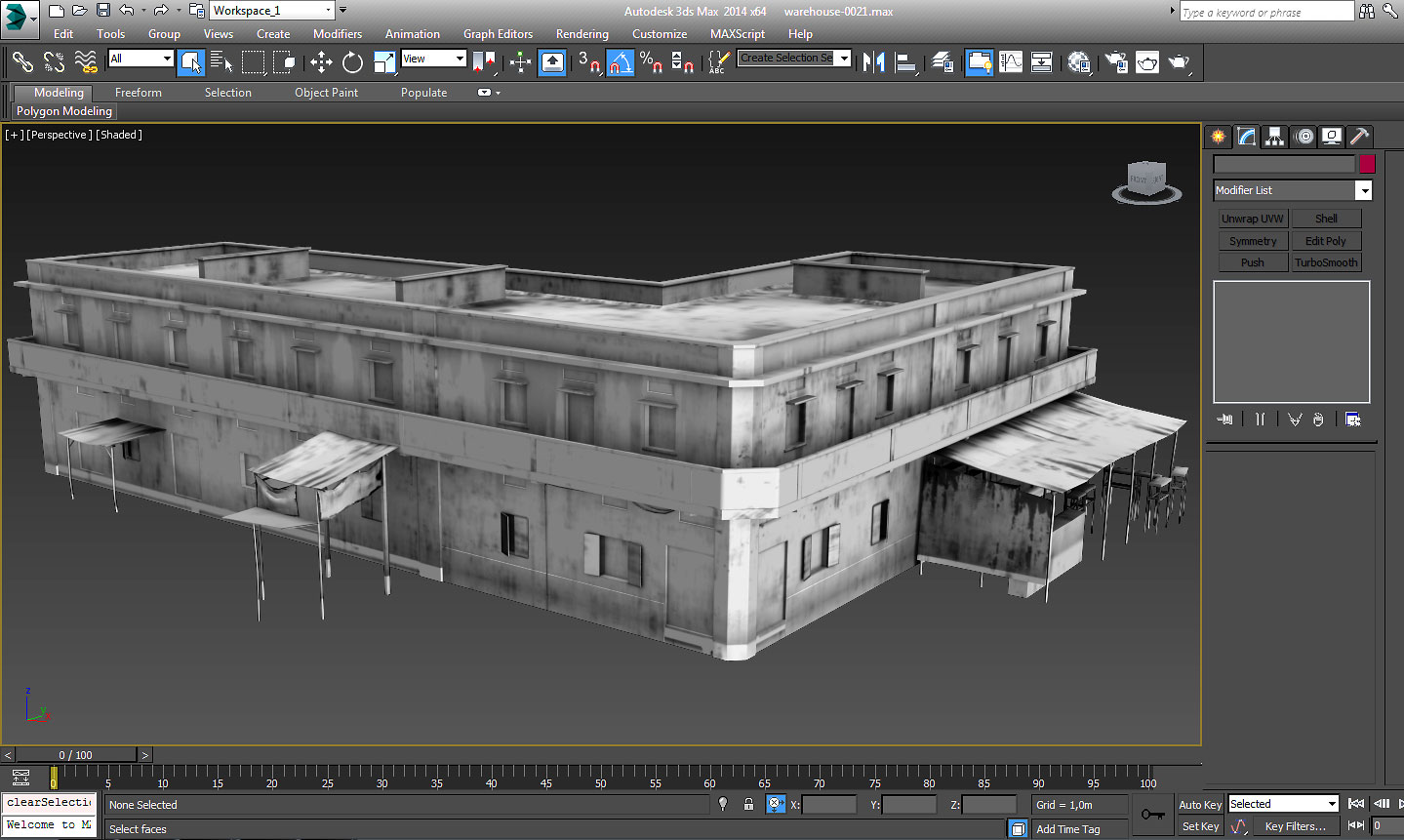

The container provides various project-management functions, including organizing scene components and sharing tasks among team members, along with locking files and restricting access to specific scene components. This tutorial introduces methods for working with the Container feature. In this tutorial, you explore Editable Poly surfaces further by building a model of a fighter airplane. With a photo of a building, you can create a remarkably realistic model. The Graphite Modeling Tools ribbon, referred to in this tutorial simply as “the ribbon,” is a customizable toolbar that provides you with all the tools you need to edit Editable Poly surfaces. In the case of 3ds Max, the Boolean operators are Subtraction, Union, Intersection, and Merge. Modeling Buildings Using Boolean Operationsīoolean operations are an effective way to create complex shapes out of simple geometric objects.Specially developed modifiers in 3ds Max make this task far easier than if you were to attempt it in a conventional CAD program. In this tutorial, you will model a building with a distinctly organic design.

For information on importing 3D models into Lens Studio, review the 3D Object Import guide.The ribbon is a customizable toolbar that provides you tools for editing Editable Poly surfaces. You now have an exported FBX file that's ready to be imported into Lens Studio. This will set your scene frame rate to 30 frames per second.

In the Time Configuration window, change the Frame Rate to Custom and set the FPS to 30. This will open the Time Configuration window. To set the frame rate in 3ds Max click on the Time Configuration button at the bottom right of the screen. To ensure that the timing of your imported animation plays back correctly in Lens Studio, you should set the frame rate of your 3ds Max scene to 30 frames per second. Lens Studio's target animation frame rate is 30 frames per second. You now have an exported FBX file that is ready to be imported into Lens Studio.įor more information on importing 3D models into Lens Studio, please follow the 3D Object Import guide. In the FBX Export window select the OK button. It is recommended to un-check both the Cameras and Lights checkbox. Then, expand the Deformations and make sure the Deformations, Skins and Morphs checkboxes are checked.Įxpand Embed Media and verify that the Embed Media checkbox is checked. Next, if you want to export animation with your model, expand Animation and verify that the Animation checkbox is checked. If your 3D model has hard edges please make sure to check the Split per-vertex Normals checkbox. Split per-vertex Normals will be used to transfer hard edge information to Lens Studio. You can triangulate your model automatically by checking Triangulate. Then check the Tangents and Binormals checkbox. In the FBX Export window, click the small triangle to the left of Geometry to show the geometry options. 3D models imported into Lens Studio must be triangulated. Then, click the Save button. This will open the FBX Export window. Select a path where you want to save your FBX file and then in the Save as type drop down menu, select Autodesk(*.FBX). Then, click on the 3ds Max icon in the top left corner and then select Export -> Export Selected. In 3ds Max, select the object or objects you want to export in the Scene Explorer panel. For the purposes of this guide, we're using 3ds Max 2017. That said, any 3D tool that can export to FBX should be able to export models that can be imported into Lens Studio.
#3D MAX MODELS HOW TO#
This guide will walk through how to use 3ds Max to export a 3D model to the FBX format so that it can be imported into Lens Studio.


 0 kommentar(er)
0 kommentar(er)
